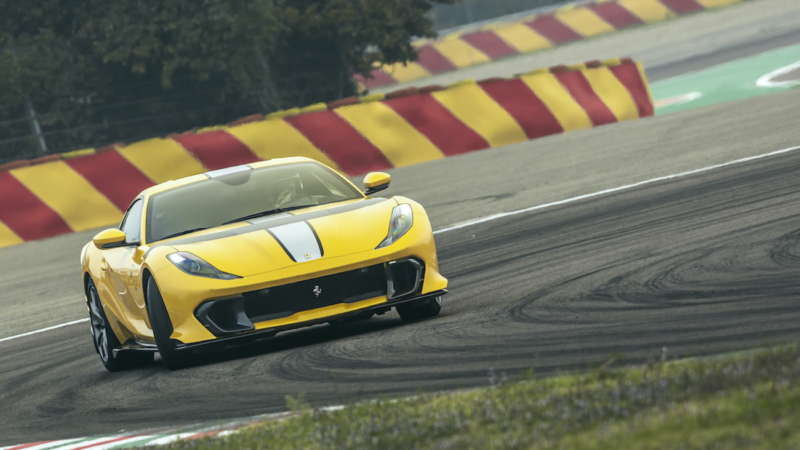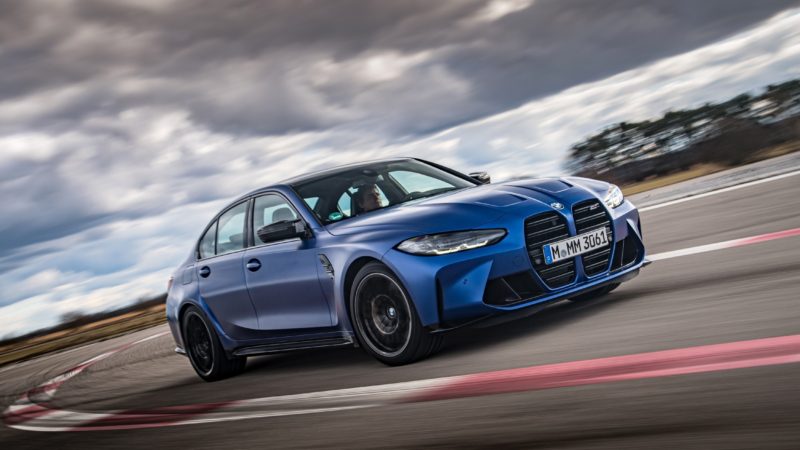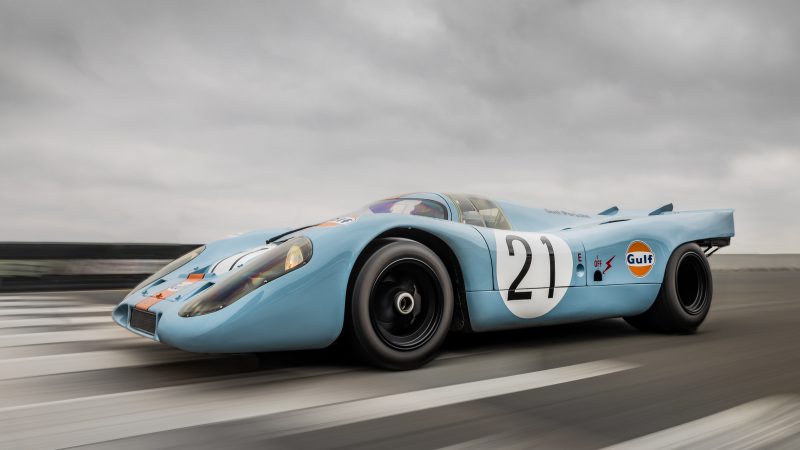McLaren 765LT: New Longtail Driven
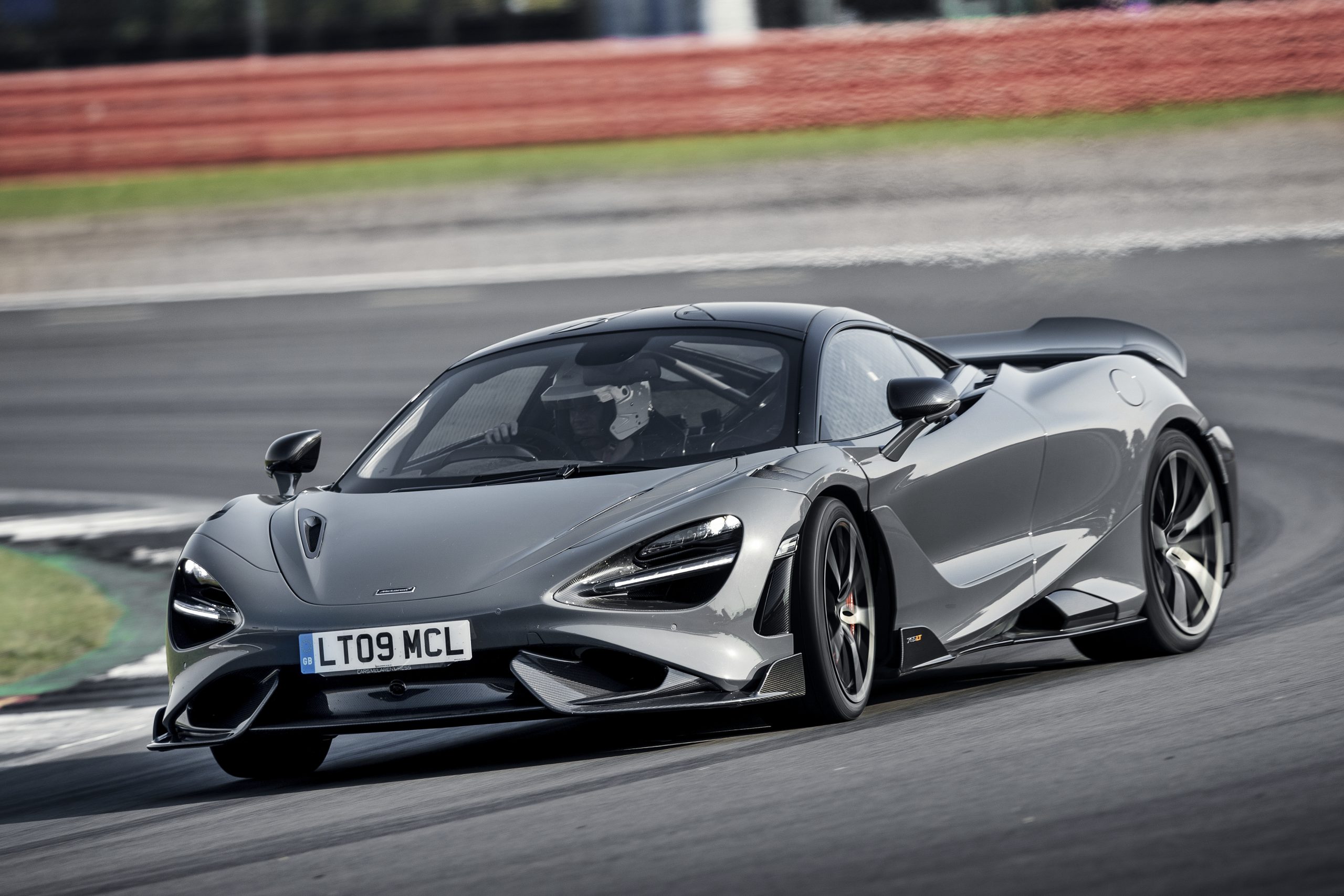
As fascinating as it is to discover how much quicker McLaren’s new 765LT feels than the already seriously rapid 720S it’s based on, perhaps the bigger question is how much slower it feels than a McLaren Senna. The two cars, after all, share much of their mechanical hardware, but the 765LT is a comparative snip at £280,000 to the £750,000 McLaren wanted for a Senna a couple of years ago.
Fortunately I’m driving this third McLaren Longtail model (successor to the 675LT) around the Silverstone International circuit in similarly dry conditions to the 720S and Senna I’ve previously tested here.
You know the drill with these Longtail models by now: take an already sporting base car, subtract weight, then add a healthy amount of power, grip and downforce, then sprinkle the lot with a tingle of extra tactility. But while Chris Goodwin (since departed for Aston Martin) was instrumental in the development of every previous LT and the 720S, this one is the first developed by his replacement, ex-CART/Indycar racer Kenny Brack.
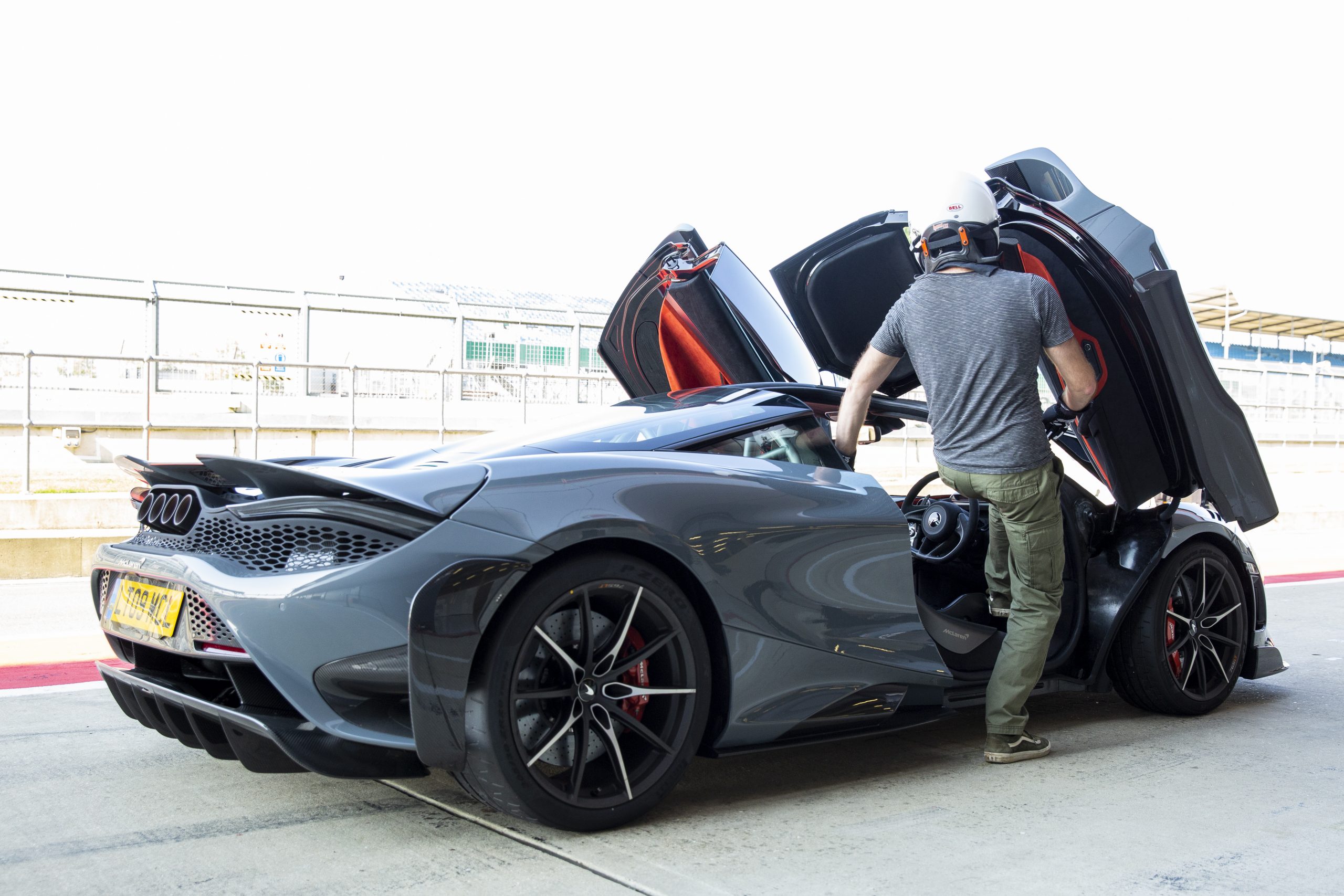
The 765LT’s 4.0-litre twin-turbo engine now produces 755bhp and 590lb ft, which is 45bhp/22lb ft up on a 720S and 34bhp short of a Senna. For the first time on a Longtail, the gear ratios of the seven-speed dual-clutch gearbox are also shortened by 15 per cent, which helps the 765LT blitz the 0-124mph dash in 7.0 seconds flat – not a bad 0-62mph time for some cars!
Weight falls by 80kg to a lightest of 1229kg dry (a Senna is just 31kg lighter), the suspension uses stiffer single-rate springs and uprated dampers (and sits 5mm lower on a 6mm wider track at the front), the steering is quicker and downforce increases by 25 per cent, though McLaren isn’t quantifying what that figure is. Ultra-grippy Pirelli Trofeo R tyres are standard, as are the Monobloc brake calipers from the Senna.
765 examples of the McLaren 765LT are being produced. All of 2020’s production of the coupe is sold out, which means around 300 or so cars, and apparently there are more expressions than there are unsold cars for 2021. Even if you do miss out, there’ll be a Spider along some time next year.
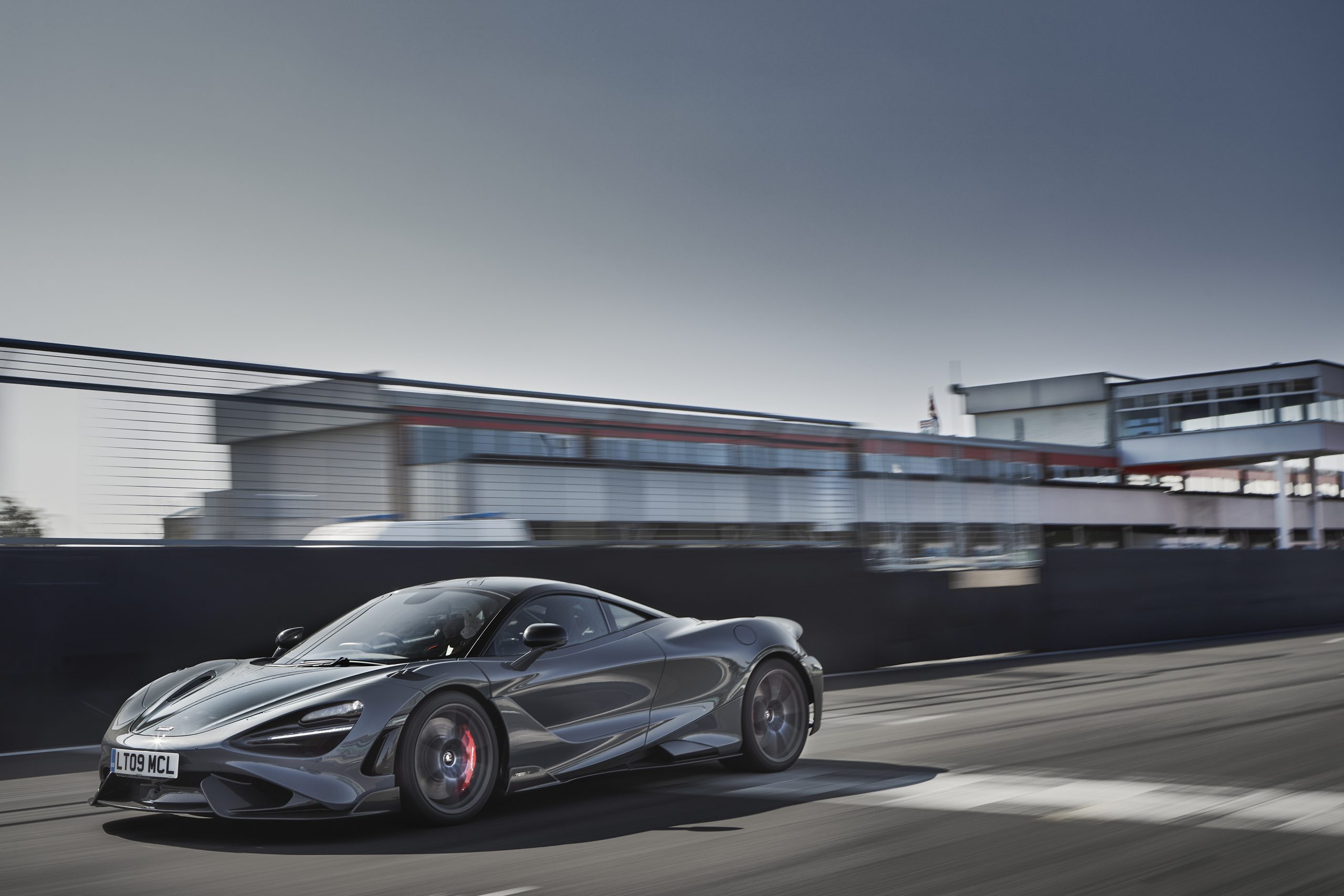
The 765LT doesn’t half look serious in the pitlane, with its dihedral doors raised up like the Karate Kid preparing to do his ‘crane’ kick. ‘My’ car gets a little extra seriousness in the form of the Clubsport Pro Pack, including the half rollcage/harness bar and an upgrade from regular carbon-ceramic brakes to Senna-spec CCMR discs that are claimed to be 60 per cent stronger and shed heat four times faster.
Clubsport Pro Pack also upgrades standard carbon chairs to the beautiful, thin-as-eggshells carbonfibre seats from the Senna, in which you sit low and slightly canted back. I think these are the wider of two sizes, but they still cup me securely and with surprising comfort given their uncompromising look.
Press the starter and the 765LT has an even deeper exhaust note than a 720S thanks to its titanium exhaust with quad outlets, and you certainly feel a tingle of resonance through the chassis and seats in a way you don’t in the 720S, but it’s far less buzzy and oppressive in here than a Senna. This is the place I’d sooner spend time.
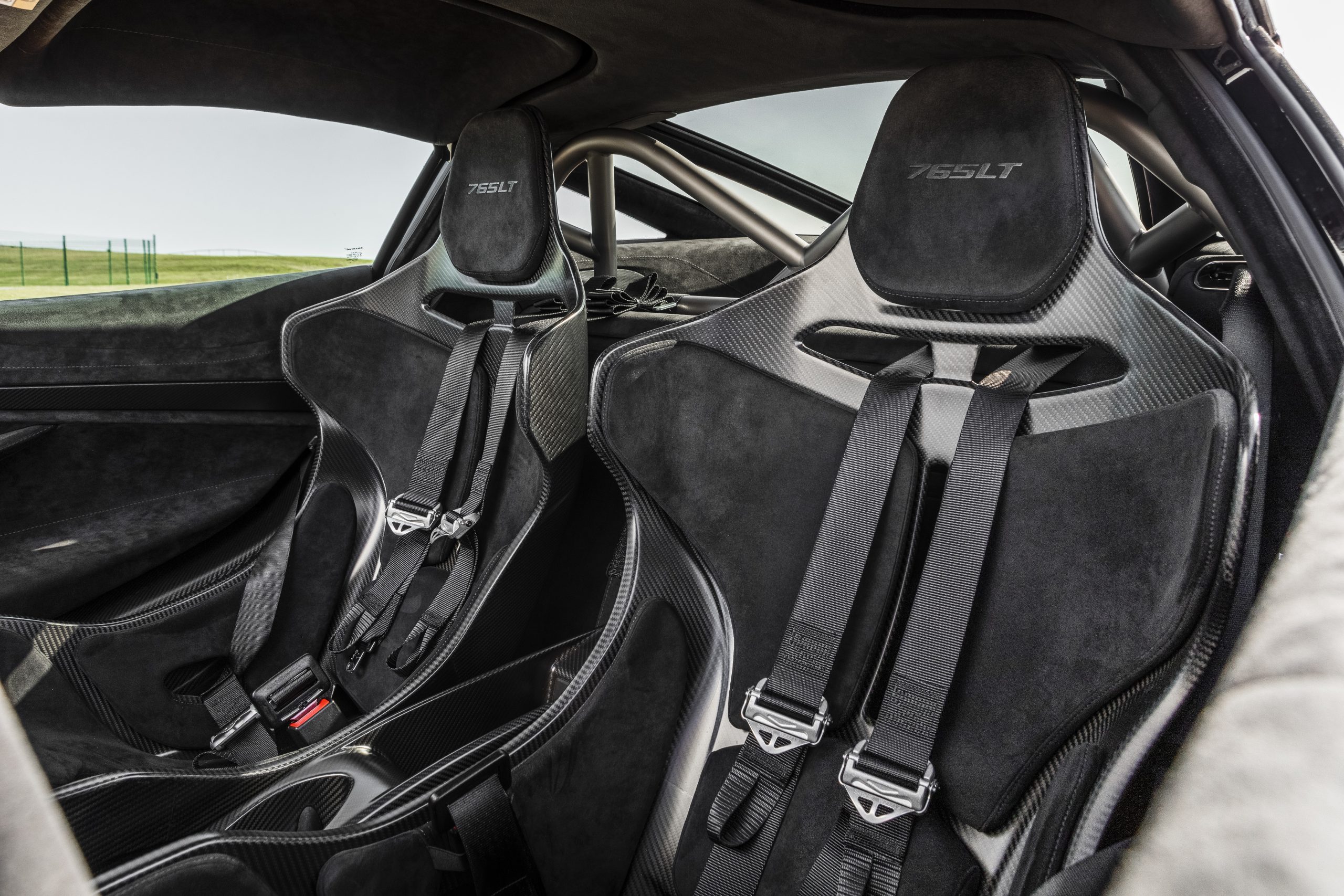
With former BTCC driver and current BTCC presenter Paul O’Neill on pacenotes/minder duties in the passenger seat, the 765LT is an easy car in which to build up your speed at a fast place like Silverstone: the relatively light and pacey steering, the easy visibility and the excellent low-set driving position all conspire to make you feel an integral part of the machine and damp down any jangling nerves.
But start to dip deeper into this Longtail’s reserves of power and things quickly start to become very serious indeed. Coming out of the pitlane you might notice some trademark McLaren lag at low revs, but at speed it’s never an issue: instead the throttle is impressively reactive and you get phenomenal acceleration through to the peak power at 7500rpm, partly thanks to the extra power, but also those shorter ratios. Performance builds progressively towards a real gritty fury towards its upper echelons, and while it’s more industrial techno than wailing guitar solo, there’s an abundance of drama and excitement unleashed with every stab of throttle. Gear shifts are a little more abrupt than a 720S in a bid to chase those final tenths of performance, but really this is something you notice on a cool-down lap than when flat-out and they certainly don’t jar.
Much as I loved it, I remember the 720S being much more of a handful than the Senna around Silverstone, simply because it rolled and moved around and lit up its rear tyres more – you had to coax it through corners, where the Senna felt nailed to the ground. The 765LT has significantly less roll than a 720S, less weight transfer under braking, of course more grip too and the brakes have greatly improved bite. You’d expect all this.
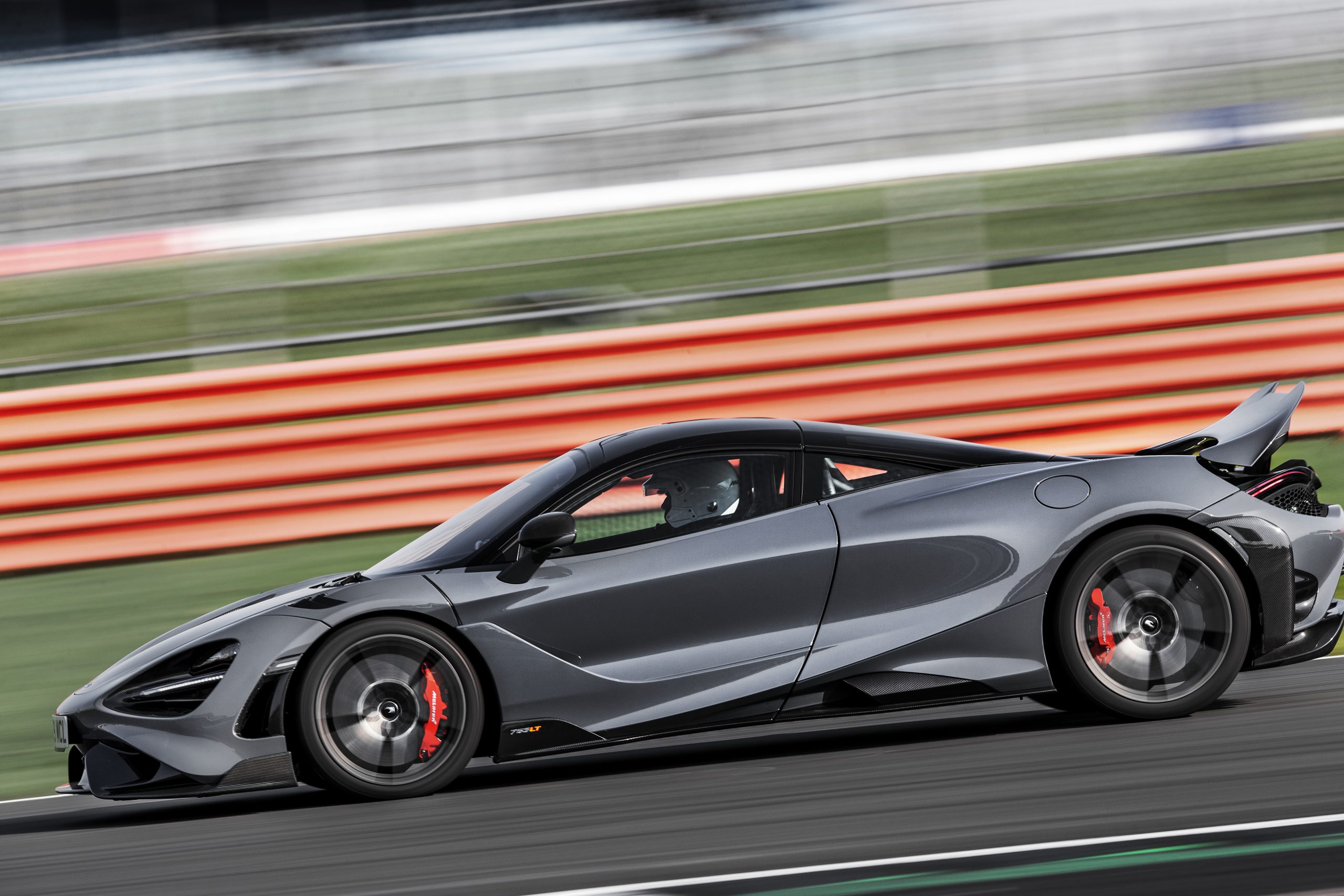
Perhaps more interesting is the lack of downforce versus the Senna, which claimed 800kg of squish at an-achievable-at-Silverstone 155mph – the LT’s corner speeds are extremely high (to the point that the car’s competence actually disguises them) but it does feel much less planted through the fast right-left at Abbey, and there’s more safety understeer when you lean on the front end hard through long fast corners like Stowe. In this way it’s more track-optimised road car in feel where the Senna is pure road-legal racer, and makes the 765LT quite a nimble, malleable car that’s easily adjusted on the throttle, with a quick lift helping to cancel understeer and make the Longtail pivot around its middle.
Arguably it also makes the Longtail a more immersive experience than the astonishing Senna – the challenge with the Senna is learning to trust how much harder you can actually push it because of the downforce, while there’s more of an intimate feel with the 765LT as you balance it right on the edge of a grip limit that’s easier to find.

The Senna would still spit sideways in low-speed corners when the downforce washed off, but you definitely need more patience with the Longtail – it’s here that the shorter ratios are a mixed blessing, because as much as they help straight-line performance, I found myself short-shifting up a gear in tight corners to make sure I could get the power down. At least Track mode gives you some leeway before the stability control jumps to the rescue, where Sport clamps down super-quick.
Perhaps unsurprisingly, then, the 765LT sits somewhere between the 720S and Senna on track, but our laps at Silverstone reveal it’s character is more hardcore 720S than watered-down Senna, with the two trackday specials still having distinctly different flavours despite a high degree of commonality. I remain in awe of the Senna’s capability, but given the 765LT is so much cheaper, looks so much better and is designed to be more use-friendly on the road, I know where I’d put my cash.
Check out the onboard footage from my first drive at Silverstone below…

